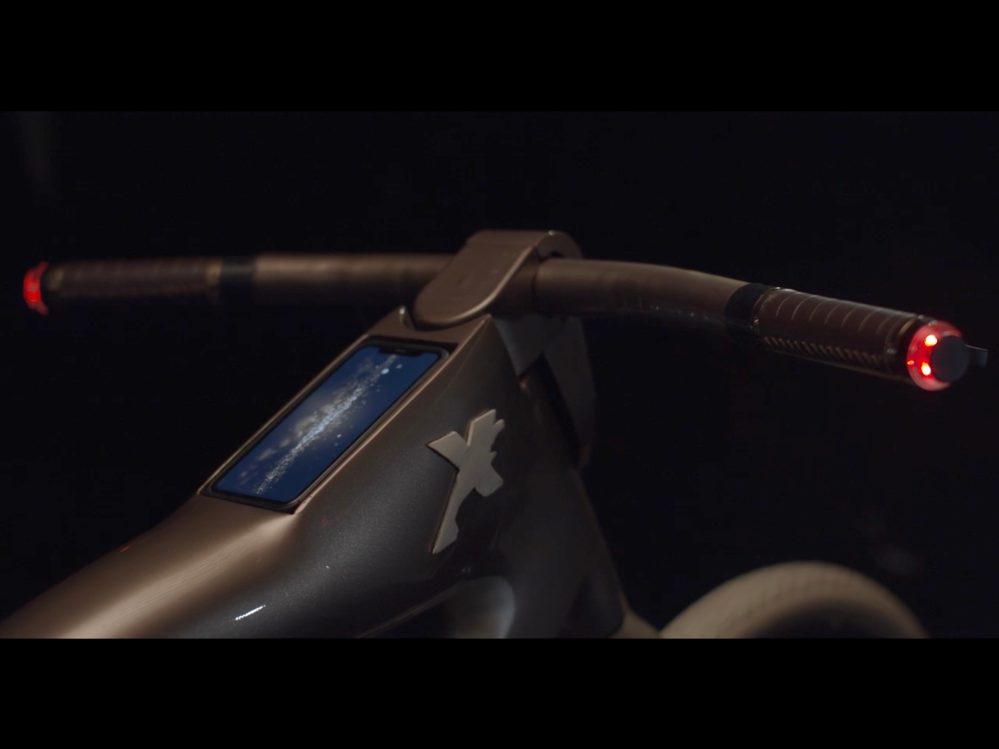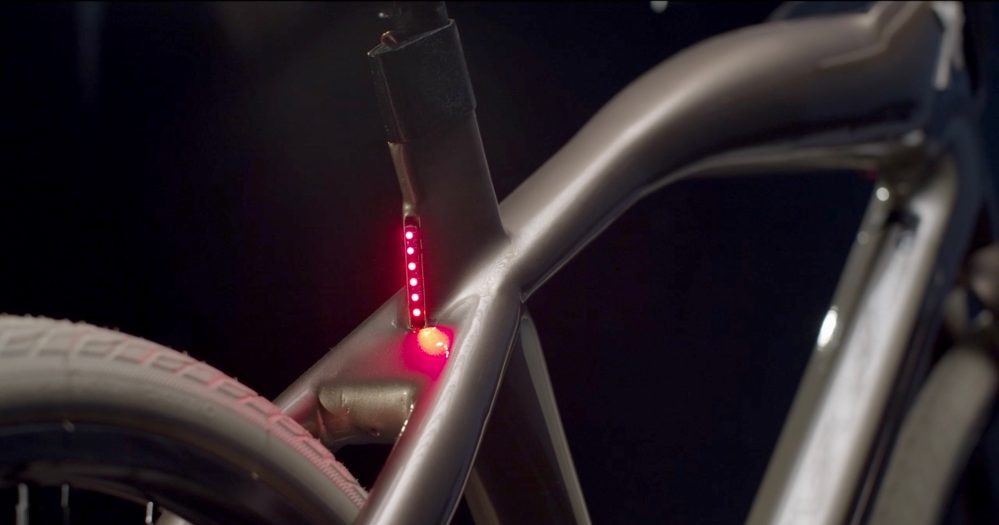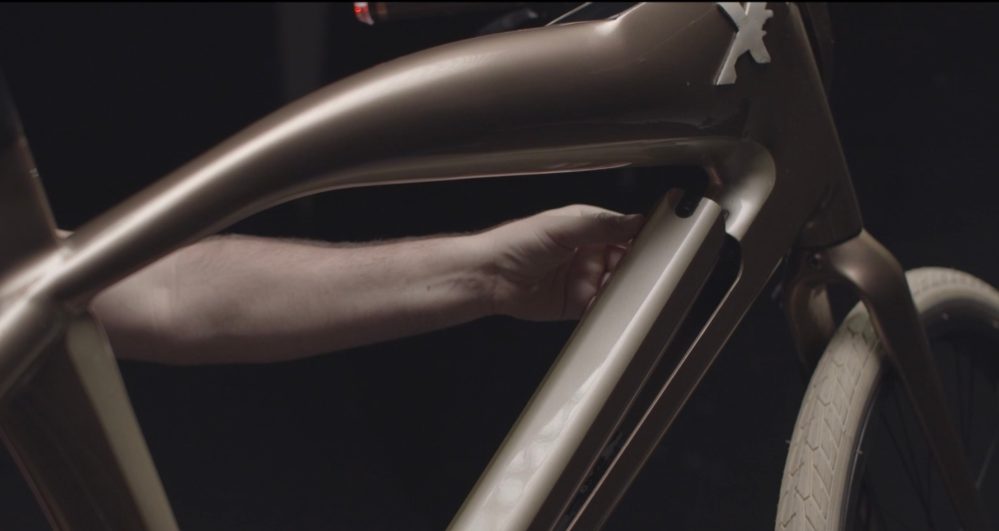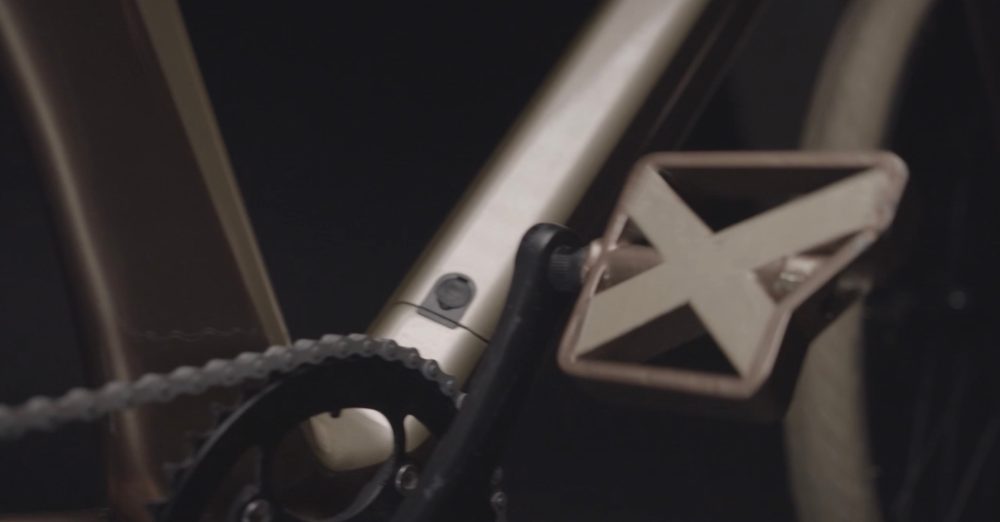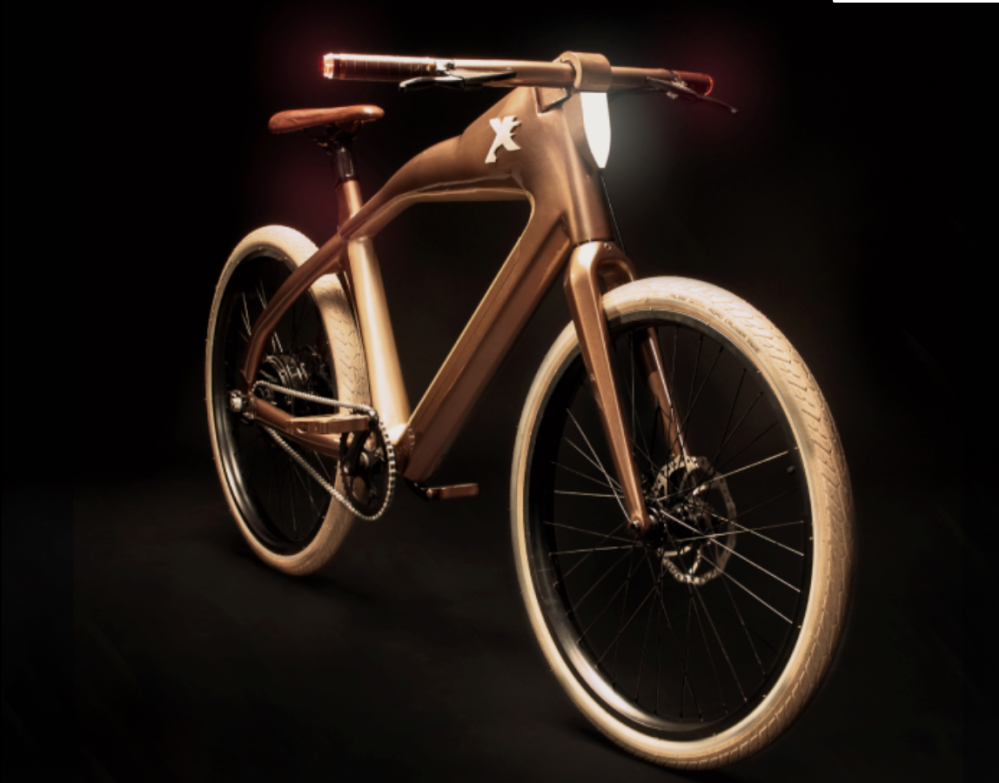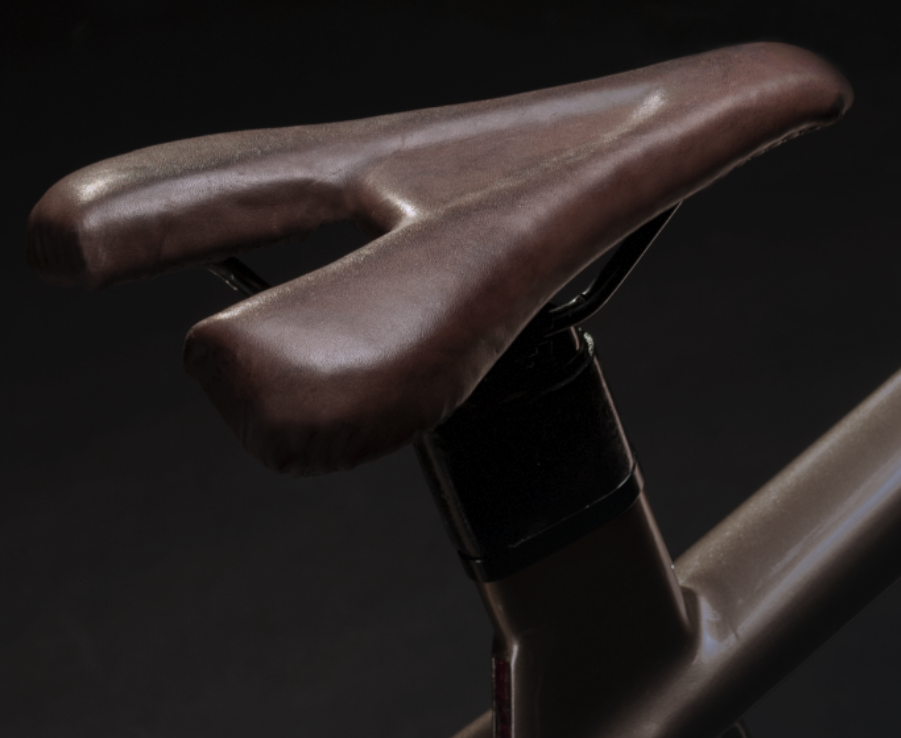
The Xone electric bicycle developed under new brand Exxite by the Barcelona-based e-bike company Rayvolt was one of the most futuristic and innovative electric bicycles unveiled last year. But its announcement and crowdfunding campaign couldn’t have come at a worse time, just months before the COVID-19 pandemic began.
Many new e-bike announcements and crowdfunding campaigns we’ve seen over the years look more like rebadged imports with the same old technology.
But the Xone was a stark departure from that tired strategy.
Instead, the Xone was a ground-up custom design that promised interesting new technology like photosensitive embedded lights that turn with the bike and gesture-activated embedded turn signals, touchscreen interface, facial recognition bike unlocking, and proportional regenerative braking that could be activated and modulated by pedaling backwards.
The frame was also a novel design using sweeping hydroformed aluminum paired with a carbon fiber fork and beautiful Catalonian leatherwork in the saddle and handlebars — a staple of Rayvolt’s previous leather-clad bikes.
Even the pedals were a custom in-house design instead of just another model number from the Wellgo pedal catalog.
Multiple throttle and pedal-assist models were planned including slower 250W EU-legal models and faster 28 mph (45 km/h) 750W US-legal models.
Delivery was expected this past summer — or at least that was the plan before the world and the electric bicycle industry in particular were turned upside down.
As we’ve previously reported, e-bike popularity absolutely exploded as the pandemic grew. E-bike retailers couldn’t stock bikes fast enough, and component manufacturers started quoting lead times of more than a year for parts like handlebars and brakes.
The problem was twofold: Factories around the world were shuttered during lockdowns while millions of soon-to-be new e-bike riders suddenly had time on their hands for recreational riding or the need to commute in a socially distant fashion.

The Xone’s original timeframe was completely thrown out the window and the team was forced to rethink everything. Much of Europe went through three months of lockdowns. The Barcelona-based team took advantage of the lockdown to double down on their R&D while they waited for factories and parts suppliers to come back online.
Rayvolt CEO Mat Razier explained in an interview with Electrek that the team used the period to meet a series of milestones, taking advantage of the lockdown to remain hyper-focused on R&D.
The first milestone was reached just before the pandemic, when the Xone raised over $500,000 via Indiegogo, pre-selling the bikes for discounts at around $2,300 to fund their development and production.
The next milestone was reached during the lockdown when the team developed the custom software to run the bike. Unlike most e-bikes that use standard controller programming, Rayvolt has their own e-bike operating system. However, that system had to be reworked to incorporate the vast array of sensors that gave the Xone its unique features, a responsibility that fell largely on Rayvolt CTO Jaime Pla. I met Jaime in Barcelona last year before the pandemic, and the guy is an absolute genius at combining software and hardware to innovate e-bikes in ways no one else is doing.
Together Jaime and his team integrated their newly designed controller with their motor to allow proportional regenerative braking from backpedaling. A slight backward push gives limited regenerative braking, while a harder push provides more intense braking — all without touching the brake levers on the handlebars. “It works like a dream,” Mat Razier tells me.
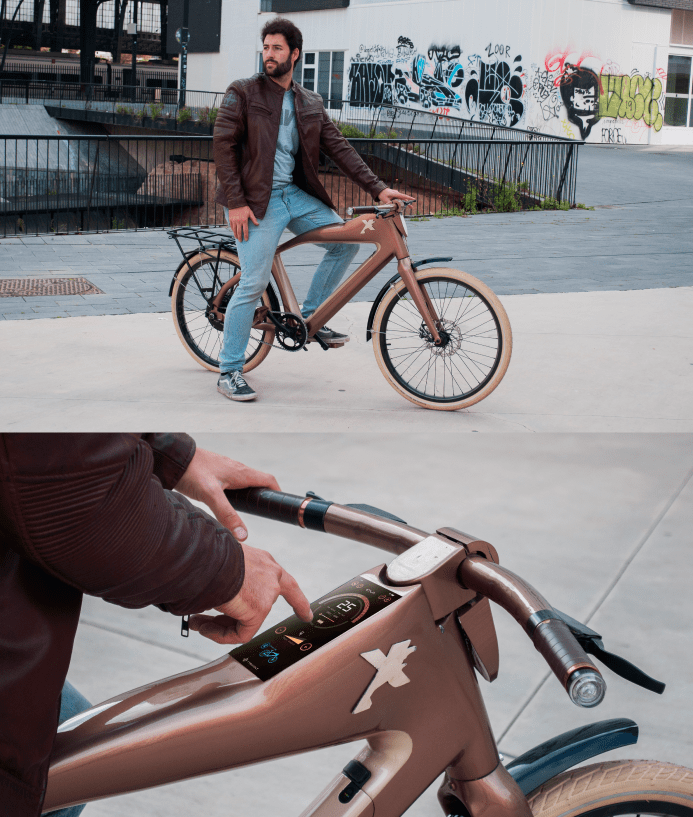
The majority of the R&D team worked from home in constant video calls, though Mat admits that he and Jaime would sneak into the office during lockdown, always sure to maintain appropriate distance from each other.
With the software/hardware integration complete, the team turned to production planning. It turned out that hydroforming the complex aluminum shapes was harder than they had expected. It took the team several iterations of mold design to ultimately achieve the wrinkle-free surface they needed. With production coming back online and factories ramping back up, the team has now been able to produce their first production samples.
The last hold-up is full production, which is still delayed. The team is planning an initial 1,000-unit run, but doesn’t expect to begin shipping completed Xone e-bikes until March of 2021.
As Mat explained:
We are now in the final stretch with most parts are being shipped to Europe for assembling now. The more problematic parts which experienced the most delays are shipping at the end of January. Once we have everything in hand we can assemble everything in 20 days, so we plan to ship in March.
Despite its delays, the Xone will soon become the flagship model for Rayvolt’s new eXXite brand. Rayvolt’s existing e-bike line combines a vintage and sometimes even steampunk-ish aesthetic, and so the eXXite brand will help differentiate the more futuristic-looking e-bikes in the lineup while helping Rayvolt stick to its core of highly stylized brass and leather-adorned e-bikes.
Mat plans to maintain a separate team to work on the eXXite line while still maintaining a bridge between the two brands to share technology resources.
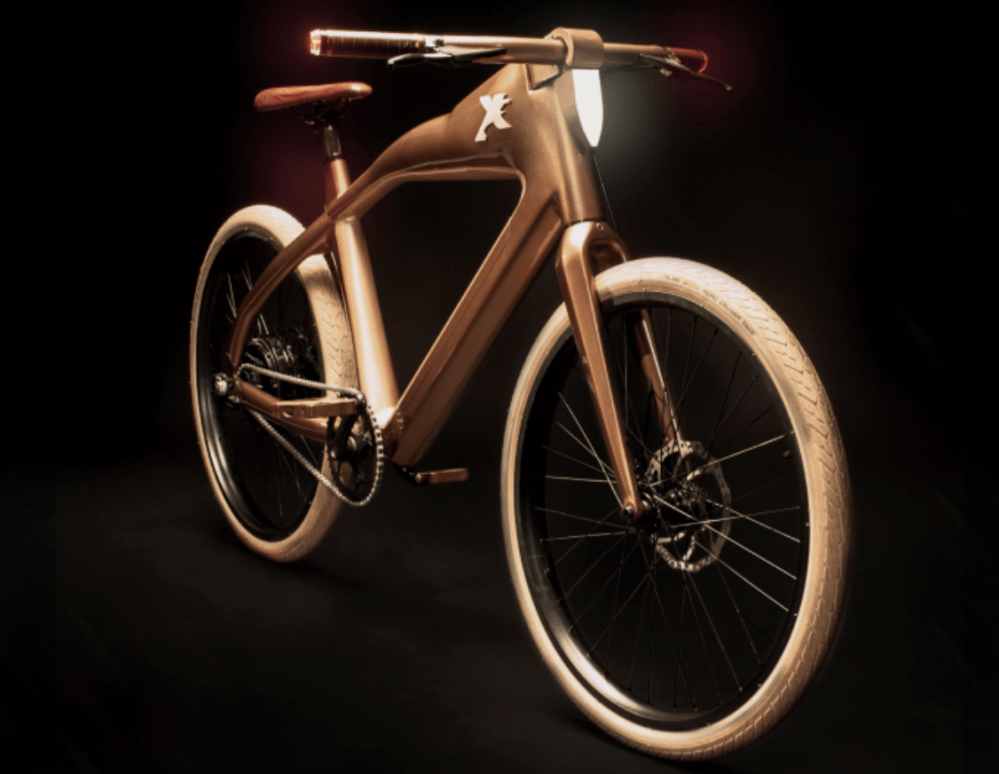
While the COVID-19 pandemic threw a wrench or two in the plans of e-bike manufacturers hoping to develop new, innovative electric bicycles, it didn’t totally derail them.
Through creative teamwork and effort, those dedicated to bringing new advances to the e-bike industry have found that when there is a will, there is a way.
We’re working on getting out to Barcelona as soon as it is safe to do so to bring you the first test of a production prototype Xone electric bicycle.
Until then, let’s hear your thoughts on the novel design in the comment section below!
Author: Micah Toll
Source: Electrek



